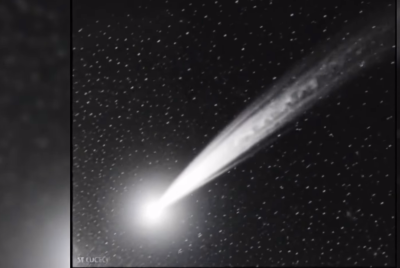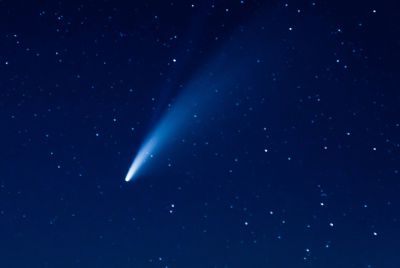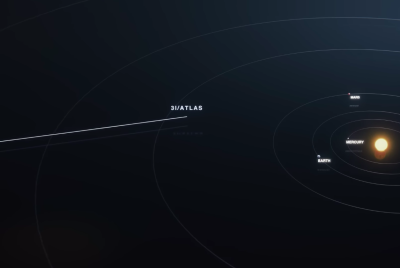Dire Wolf's Return Could Be Followed by Moa's Revival—A 12-Ft. Flightless Bird Extinct for 600 Years
Restoring moa could help bring back some of New Zealand's primal woodlands.

The dire wolf is once again stirring public fascination, this time on TikTok, after photos of three restored pups — Romulus, Remus and their sister Khaleesi — went viral. The canines have not only survived but are thriving, reportedly doubling in size since birth. Now, Colossal Biosciences, the company behind the dire wolf de-extinction project, has set its sights on another long-lost species: the giant moa bird of New Zealand.
Peter Jackson Wants Moa Brought Back
Renowned New Zealand filmmaker Peter Jackson, best known for directing The Lord of the Rings and The Hobbit trilogies, is championing the resurrection of the moa. Jackson, who is also a major investor in the de-extinction firm, believes Colossal's work should extend to his home country.
'When I was a kid, I dreamed of personal jet packs and flying cars,' said Jackson. 'One of the other things I always dreamed of was being able to bring back extinct species.'
He added that he asked the Colossal team, 'Why aren't you doing the moa, which is a thing I really care about?'
Although impressed by the resurrection of species like the woolly mammoth and the Tasmanian tiger, Jackson said he has always been most passionate about the moa. Colossal's geneticists reportedly told him they would be excited to take on the project.
What Is a Moa?
The moa was a giant, flightless bird native to New Zealand. It could grow up to 12 feet (3.6 metres) tall and weigh more than 500 pounds (230 kilograms). Moa thrived during the Neogene period, from about 11.6 to 5.3 million years ago, and went extinct around 600 years ago due to overhunting and habitat loss.
Jackson and his partner Fran Walsh have collected over 300 moa bones, showing their personal investment in the bird's legacy. In a statement on 8 July 2025, Jackson said, 'With the recent resurrection of the dire wolf, Colossal has made real the possibility of bringing back lost species.'
Could Moa Help Restore New Zealand's Forests?
Experts believe reviving the moa could have ecological benefits. Before extinction, moa birds helped maintain New Zealand's native flora by dispersing seeds and grazing forest undergrowth. Their disappearance disrupted ecosystems and contributed to the extinction of their main predator, the Haast's eagle.
Reintroducing moa could restore parts of New Zealand's ancient forests and support biodiversity.
Dire Wolves Are Thriving
While moa revival remains in early discussions, Colossal continues to care for its first successfully revived dire wolves. According to Matt James, Colossal's Chief Animal Officer, Romulus and Remus are now over six months old and weigh more than 90 pounds.
'That's about 20 percent larger than a standard grey wolf,' said James in a company press release. 'We can really tell that the dire wolf genes are kicking in. We are getting these large wolves that resemble the ancient specimens.'
Colossal Biosciences, founded in 2021 and based in Texas, is also working on reviving the woolly mammoth and the dodo.
With Peter Jackson's backing and Colossal's scientific capabilities, the dream of bringing back New Zealand's iconic moa may one day become a reality.
@hashem.alghaili Scientists bring back dire wolves after 12,500 years of extinction. Colossal Biosciences has produced three dire wolf pups—two males and one female—using gene editing, cloning, and ancient DNA from fossils dated 13,000 to 72,000 years old. By editing 14 genes in gray wolf cells to match dire wolf traits like thick fur, stronger jaws, and broader skulls, scientists recreated the dire wolf phenotype. The embryos were implanted into domestic dogs. The pups, born in late 2024 and early 2025, now live on a secure 2,000-acre site under strict oversight. While the animals are about 99.9% gray wolf, Colossal claims this is the first real proof of de-extinction in practice and a step toward reviving species like the mammoth and dodo.
♬ original sound - Hashem Al-Ghaili - Hashem Al-Ghaili
@colossal Pawsitively exhausted from being so cute. 💖 Just like their distant dog-relatives, our dire wolf pups did a fair amount of sleeping when they were young. But scientists believe most adult wolves sleep around eight hours, usually lightly, with long nods after a big meal and with short naps throughout the day. Solid self care in that neverending quest for hunt-life balance.
♬ original sound - colossal
@dixon_cider26 These two wolves were returned from extinction using genetic edits derived from a complete dire wolf genome, meticulously reconstructed from ancient DNA found in fossils dating back 11,500 and 72,000 years. This achievement is the result of years of pioneering science, tireless innovation, and unwavering dedication. #itiscolossal #direwolfproject #jre #jreclips #crispr #direwolf #romulus #remus#deextinction
♬ Past Lives - Mason
© Copyright IBTimes 2025. All rights reserved.





















